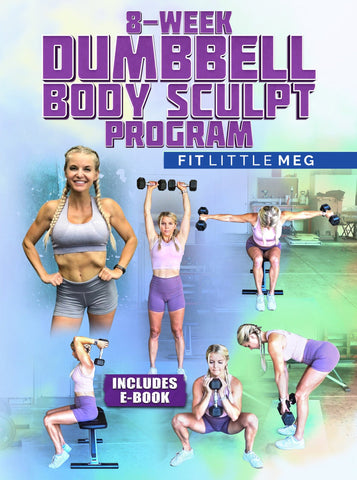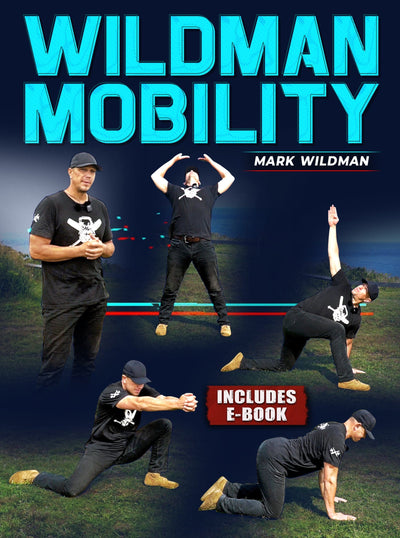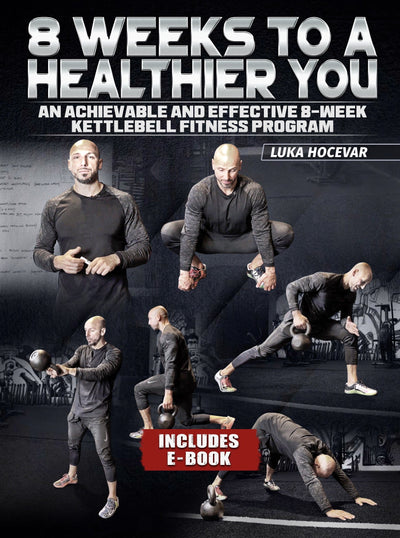Alternatives to Kettlebell Swings
Alternative exercises to kettlebell swings can offer similar benefits while adding variety to your workout routine. Kettlebell swings primarily target the posterior chain muscles, including the glutes, hamstrings, and lower back. If you're looking to switch things up or don't have access to a kettlebell, here are some alternatives to kettlebell swings:
Dumbbell Swings: Mimicking the motion of kettlebell swings, dumbbell swings can be performed by holding a dumbbell with both hands between your legs and swinging it up to shoulder level. This exercise engages the same muscle groups as kettlebell swings and provides a challenging cardiovascular workout.
What this article covers:
- What Do Kettlebell Swings Work
- How to Do Kettlebell Swings
- Kettlebell Swings with Dumbbell
- Amount of Reps
Resistance Band Pull-Throughs: Loop a resistance band around a sturdy anchor point and perform pull-throughs by hinging at the hips and pulling the band from between your legs to the front of your body. This movement effectively activates the posterior chain while adding resistance and stability challenges.
Medicine Ball Slams: Holding a medicine ball overhead, explosively slam it to the ground in front of you. This movement engages the same hip hinge pattern as kettlebell swings and also provides an excellent outlet for releasing energy and building power.
Hip Thrusts: Using a bench or elevated surface, position your upper back against it, with your feet flat on the ground and knees bent. Push through your heels to lift your hips off the ground, squeezing your glutes at the top. Hip thrusts target the glutes and hamstrings, helping to strengthen and tone the posterior chain.
Romanian Deadlifts: This traditional strength exercise involves holding a barbell or dumbbells in front of your thighs and hinging at the hips while maintaining a slight knee bend. Lower the weights toward the ground, feeling the stretch in your hamstrings, and return to the starting position. Romanian deadlifts are excellent for building hamstring and lower back strength.
Sumo Deadlift High Pulls: Using a barbell or dumbbell, adopt a wide-legged stance and perform a deadlift while pulling the weight explosively to chest level. This exercise not only targets the posterior chain but also engages the upper back and shoulders.
Box Jumps: For a plyometric alternative, try box jumps. Explosively jump onto a stable platform or box, then step or jump back down. This exercise builds explosive power in the lower body and engages the hips and glutes.
Single-Leg Romanian Deadlifts: Holding a dumbbell in one hand, stand on the opposite leg and hinge at the hips while extending the other leg straight behind you. This exercise challenges balance, stability, and targets the hamstrings and glutes on the working leg.
Swiss Ball Hip Thrusts: Lie on your back with your feet on a Swiss ball, and perform hip thrusts by pushing your hips upwards while rolling the ball towards you. This variation adds an element of instability, further engaging your core muscles and challenging your balance.
Barbell Hip Bridges: Position a barbell across your hips while lying on the ground with your knees bent and feet flat. Push through your heels to lift your hips, creating a bridge, and then lower them back down. This exercise activates the glutes and hamstrings while also involving the lower back muscles.
What Do Kettlebell Swings Work
So, what do kettlebell swings work? Kettlebell swings are a highly effective exercise that primarily targets the posterior chain muscles, including the glutes, hamstrings, and lower back. By engaging these muscles in a dynamic hip-hinging motion, kettlebell swings help build strength, power, and muscular endurance. Additionally, the explosive nature of the movement requires the core muscles to stabilize the body, contributing to improved core strength and stability. Kettlebell swings also elevate the heart rate, making them an excellent cardiovascular exercise that can enhance overall fitness and aid in fat loss.
How to Do Kettlebell Swings
So, How to do kettlebell swings safely? Performing kettlebell swings involves a specific technique to ensure safety and effectiveness. Start by standing with your feet shoulder-width apart, the kettlebell a short distance in front of you. With a slight bend in your knees and maintaining a neutral spine, grip the kettlebell handle with both hands. Initiate the movement by hinging at your hips, pushing them back while keeping your back straight and chest up. As the kettlebell swings back between your legs, forcefully drive your hips forward to propel the kettlebell upward. Allow the momentum to carry the kettlebell to about chest level, then let it swing back between your legs. Maintain a controlled, fluid motion throughout the exercise, using the power generated from your hips.
Kettlebell Swings with Dumbbell
Adapting kettlebell swings with a dumbbell is possible and provides a similar training effect. Choose a dumbbell with a comfortable grip and an appropriate weight. The technique mirrors that of kettlebell swings, where you hold the dumbbell with both hands between your legs. The key is to execute the hip hinge and explosive hip thrust to swing the dumbbell upward. This variation engages the same muscle groups and cardiovascular system, making it a viable alternative when kettlebells are unavailable.
Amount of Reps
Wondering How Many Kettlebell Swings to do? The optimal number of kettlebell swings varies based on individual fitness levels, goals, and workout structure. Beginners might begin with sets of 10 to 15 swings and gradually increase as they become more proficient. Intermediate to advanced individuals could perform sets of 20 to 30 swings or even more, depending on their conditioning. It's crucial to prioritize proper form and quality over quantity. As you gain experience, you can gauge the appropriate number of swings based on your energy levels, intensity, and recovery capacity. Consulting a fitness professional can provide personalized guidance on the ideal number of kettlebell swings for your specific needs.
Incorporating these alternative exercises into your routine can provide a fresh perspective on posterior chain training and help you achieve a well-rounded and engaging workout. Remember to focus on proper form and gradually increase intensity as you progress.
Did you find the blog helpful? If so, consider checking out other guides:
- Benefits of Kettlebell Swings
- 100 Kettlebell Swings a Day
- 10,000 Kettlebell Swing Challenge
- How Many Kettlebell Swings
- 300 Kettlebell Swings a Day
- 50 Kettlebell Swings a Day
- 200 Kettlebell Swings a Day
- Kettlebell Jump Squats
- Hack Squat Kettlebell
- Kettlebell Squat Variations
- The Kettlebell Rack Squat
- Kettlebell Pullover
- Kettlebell Pull Exercises
- Kettlebell High Pull Muscles Worked
- Pull Throughs and Kettlebell Swings





